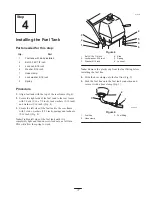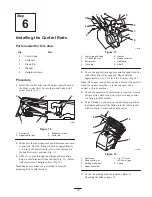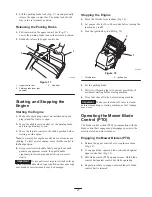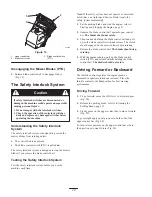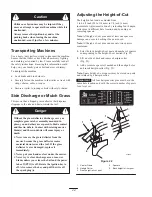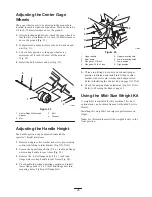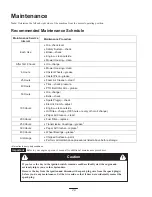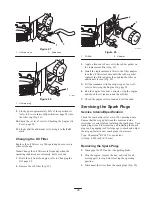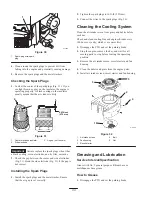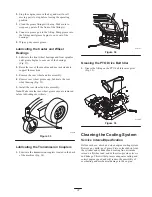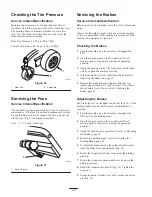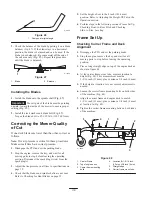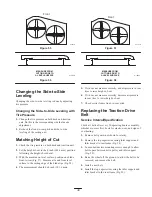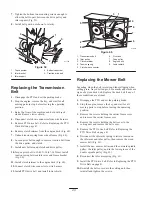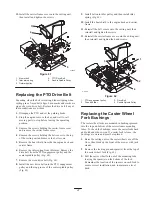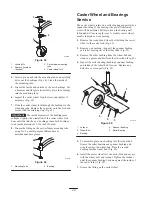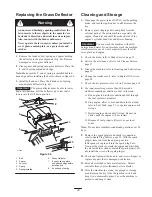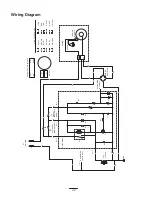
29
1
2
Figure 27
1.
Oil drain valve
2.
Drain hose
m–7453
1
Figure 28
1.
Oil drain plug
9. Slowly pour approximately 80% of the specified oil
(refer to Service Interval/Specification, page 28) into
the filler cap (Fig. 26).
10. Check the oil level; refer to Checking the Engine Oil
Level, page 28.
11. Slowly add the additional oil to bring it to the Full
mark.
Changing the Oil Filter
Replace the oil filter every 200 operating hours or every
other oil change.
Note: Change the oil filter more frequently when the
operating conditions are extremely dusty or sandy.
1. Drain the oil from the engine; refer to Changing the
Oil, page 28.
2. Remove the old filter (Fig. 29).
2
m–7451
1
Figure 29
1.
Oil filter
2.
Adapter
3. Apply a thin coat of new oil to the rubber gasket on
the replacement filter (Fig. 29).
4. Install the replacement oil filter to the filter adapter,
turn the oil filter clockwise until the rubber gasket
contacts the filter adapter, then tighten the filter an
additional 3/4 turn (Fig. 29).
5. Fill the crankcase with the proper type of new oil;
refer to Servicing the Engine Oil, page 28.
6. Run the engine for about 3 minutes, stop the engine,
and check for oil leaks around the oil filter.
7. Check the engine oil level and add oil if needed.
Servicing the Spark Plugs
Service Interval/Specification
Check the spark plugs after every 100 operating hours.
Ensure that the air gap between the center and side
electrodes is correct before installing the spark plug. Use a
spark plug wrench for removing and installing the spark
plugs and a gapping tool/feeler gauge to check and adjust
the air gap. Install a new spark plugs if necessary.
Type: Champion
RCJ-8Y or equivalent
Air Gap: 0.030 inch (0.75 mm)
Removing the Spark Plug
s
1. Disengage the PTO and set the parking brake.
2. Stop the engine, remove the key, and wait for all
moving parts to stop before leaving the operating
position.
3. Disconnect the wires from the spark plugs (Fig. 30).



